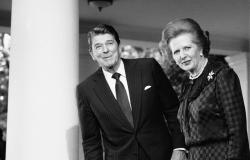No Way to Run the World

A decade after the financial crash, an epic repeat is on course.
Two reports by Swiss banks, published within a week of each other, offer further revealing evidence on the growth of a wealthy transnational overclass. Credit Suisse finds that the fortunes of the very wealthiest people in the United Kingdom (those owning over $50 million) have been growing at a much faster rate than the general population.
These ultra-high-net wealth individuals (UHNWI) number 4,670, an increase of 8.5% over the year. In the United States, the number is 70,540, with over 6,000 joining that group, making it the largest such category in the world; the next is in China at 16,510. In global terms the richest 1% own just under half of total assets (see Gráinne Gilmore, "The world's super rich populations are growing but where is growth strongest?”, KnightFrank, October 2018).
In parallel, a joint UBC-PwC report focuses less on UHNWIs overall than on the seriously super-rich, the world’s dollar billionaires. They now number 2,158 and collectively increased their wealth by $1.4 trillion in the past year. Much of the growth in wealth is taking place in the United States and western Europe, but a huge change in recent years is the increasingly transnational spread of the extremely wealthy, China again being a prime example. Twelve years ago, there were just 16 billionaires in the PRC; today there are 373.
Perhaps most significant is the rate of increase in wealth. In the UK in 2017, the richest 1,000 people increased their wealth collectively by £66 billion ($85bn), meaning the average individual rise in wealth was £66 million. Moreover, that figure was not exceptionally high – the previous annual jump had been even higher.
The British government has long insisted that the financial crisis of 2008 and subsequent years meant that there was no alternative to its austerity policies, although the impact of that crisis had at worst a temporary and limited impact on the super-rich. Now, prime minister Theresa May says that austerity is over, but few believe her. The mood is more one of “there never was any austerity for the wealthy, only for the rest, where that is still the order of the day”.
Just one canard of British politics, which in this case took root after the financial crash, was that it was all the Labour government’s fault. That version of events was consolidated in the three months following the general election of 2010, when Labour was preoccupied with electing a new leader after its loss of power. Where Labour really had been in error, especially in the early years of its governance from 1997, was the vacuum where effective financial regulation of the City of London should have been – although any such attempt would have met huge resistance from the City and the Conservative opposition.
The age of casino capitalism
The origins of the 2008 crisis actually lie nearly four decades earlier, when the election of Ronald Reagan as United States president in 1980 ushered in the era of neo-liberal economics. An important measure of the Reagan administration was the Garn-St Germain Depository Institutions Act (1982), which opened to a far laxer era of financial regulation. Among its effects was the partial dismantling of the Franklin Roosevelt-era Glass-Steagall Act (1933), whose separation of commercial from investment banking had in turn been prompted by the Great Crash of 1929.
As the US pushed through more deregulation in the 1980s, the Margaret Thatcher Government in Britain followed a similar path, especially with the “big bang” bonfire of regulations in 1986. It was this pattern that Labour failed to alter, thus permitting a culture of light-touch treatment of the City to become embedded.
The neo-liberal system came to dominate economic analysis, and was given an immense boost by the collapse of the Soviet Union at the end of the cold war in 1989-91. At the end of the 1990s, the international-relations scholar Susan Strange pinpointed the dangers lurking beneath the surface. In her last book Mad Money: When Markets Outgrow Governments (1998) - published only two weeks before her death, coincidentally in the very midst of the financial panic - she identified five key issues: money dominates politics; state control of economies has lessened; taxes are not effectively collected; inequality is rising; greed rules.
Strange had earlier published Casino Capitalism (1986), a prescient study of how the financial markets’ escape from democratic accountability prefigured major problems. It is sad that she did not live to see what she had so assiduously warned against. (Her LSE colleague Fred Halliday recalled “a person of indomitable optimism, humour and mordant tongue” whose “favourite slogan was: ‘Always attack the economists!’” [see "The revenge of ideas: Karl Polanyi and Susan Strange”, 24 September 2008]). Even without the benefit of her analysis it should not have been hard to read the signs in the early 2000s at latest, but most analysts contrived to miss them.
The origins of the 2008 crisis lay specifically in the hugely risky toxic loans made to low-income house-owners, especially in the United States, and the manner in which they were bundled into credit-default swaps (CDSs) and traded as investments, as well as being further bundled into collateralised debt obligations (CDOs). By the time that Lehman Brothers failed in September 2008, the domino effect of unsustainable mortgages was unstoppable.
Despite the many warning signs of crisis, as far back as the collapse of Baring Brothers in 1995, the whole system was unprepared. The explanation lies partly with the five factors listed by Strange, but to these must be added two more. First, the detailed quantitative analyses of risk that were key parts of the system, but not fully understood by senior management; second, and perhaps most important of all, the sheer arrogance and hubris that permeated the entire, inadequately regulated system.
Ten years later, there are many claims that lessons have been learned. To a certain extent that is true of the mortgage industry, yet the overall hubris persists. Those two Swiss bank reports are evidence enough that this remains an exceedingly good time to be part of the high-end overclass.
Once more, the signs of a gathering storm are being ignored. In several areas of the world, managerial arrogance continues to exceed any kind of good sense. CDOs, for example, may now be traded more cautiously, but that is far less true for collateralised loan obligations (CLOs): invested bundles of loans to a wide range of businesses, many of them as shaky as the toxic mortgage loans of a decade ago.
The core problem, as Susan Strange wrote twenty years ago, is that no one is in control of financial markets: neither governments nor major intergovernmental organisations such as the International Monetary Fund and the Bank for International Settlements (BIS). The risk now is of a repetition of 2008, quite possibly on an even larger scale. Both past experience and current evidence suggest that the super-rich will come out of it even richer – not a good way to run the world.
Paul Rogers is professor in the department of peace studies at Bradford University, northern England. He is openDemocracy'sinternational security adviser, and has been writing a weekly column on global security since 28 September 2001; he also writes a monthly briefing for the Oxford Research Group. His latest book is Irregular War: ISIS and the New Threat from the Margins(IB Tauris, 2016), which follows Why We’re Losing the War on Terror (Polity, 2007), and Losing Control: Global Security in the 21st Century (Pluto Press, 3rd edition, 2010). He is on Twitter at: @ProfPRogers
This first appeared on:
Image credit: Levan Ramishvili via Flickr Public Domain Mark 1.0



